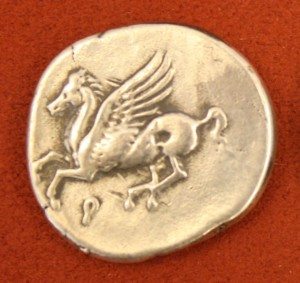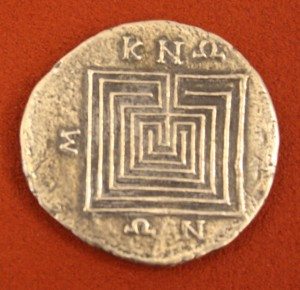The first Greek coins were minted in Aegina from 560 BCE, and then Athens and Corinth also began their own coin production shortly after. Each city used an easily identifiable symbol: a turtle for Aegina, an owl for Athens and a winged-horse for Corinth. The turtle was an apt choice for the Mediterranean trading power, the owl was associated with Athens’ patron goddess Athena, and Pegasus was the horse of the Corinthian hero Bellerophon. Other cities soon produced their own coins and images from Greek mythology continued to be popular in coin designs. Later, letters and short inscriptions were added to signify the issuing authority. The coins were created by hammering a plain metal disk placed between two engraved metal dies made from hardened bronze or iron. The disks were heated first to aid the stamping of the design. Greek coins were most commonly made of silver, gold, or a copper alloy.
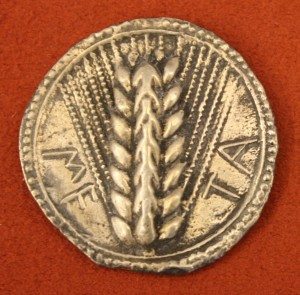
Silver stater from Metapontum, 520 BCE. O: Ear of wheat, R: same incuse.
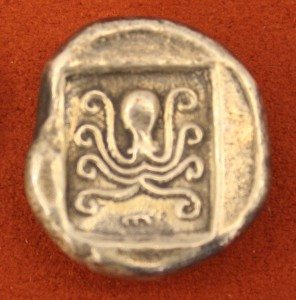
Silver tetradrachm from Eretria Euboea, c. 485 BCE. O: Cow, R: Octopus in incuse square.

Athenian Silver Tetradrachm, 479-454 BCE. O: Athena. R: Owl and olive branch.

Silver decadrachm from Syracuse, Sicily, c. 400 BCE. O: Quadriga with Nike crowning a charioteer. R: Head of Arethousa with dolphins.
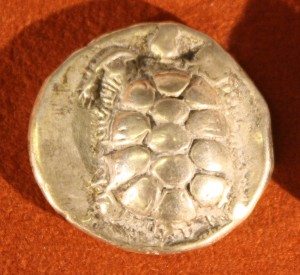
Silver stater from Aegina, 4th century BCE. O: Tortoise, R: Incuse square.
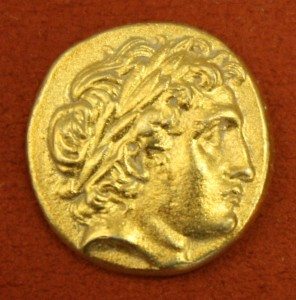
Macedonian Gold Stater, 359-336 BCE. O: Apollo, R: Charioteer.
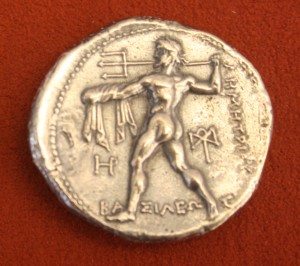
Silver tetradrachm from Macedon, 306-283 BCE. O: Nike, R: Poseidon.

A silver tetradrachm from Cos, 300-190 BCE. O: Hercules, R: Crab.
The Alpha Bank Numismatic Collection was created in 1975 and is one of the largest private coin collections in the world. The collection has 11,000 coins from the ancient world spanning the 7th century BCE to the 3rd century CE. The above images were taken at the 2012 exhibition at the Banknote Museum of the Ionian Bank at Corfu, Greece. As of 2014 the Alpha Bank Numismatic Collection has a permanent exhibition space at 41, Panepistimiou Street, Athens.
All images were taken by the author and can be found on the Ancient History Encyclopedia website.
